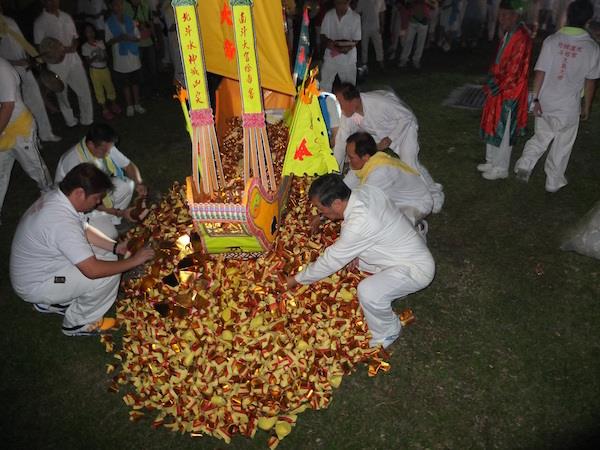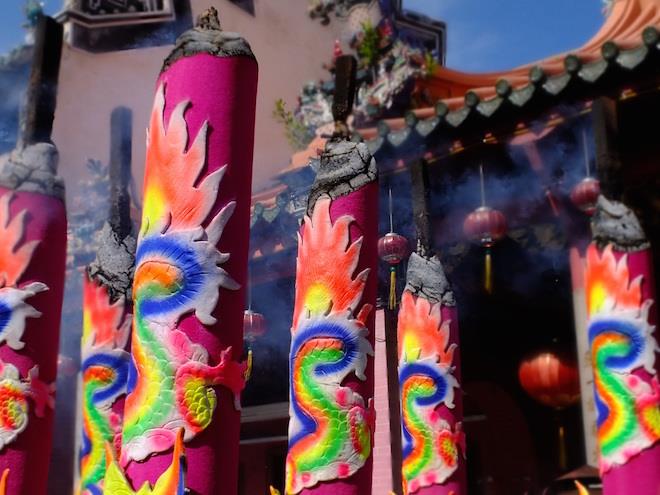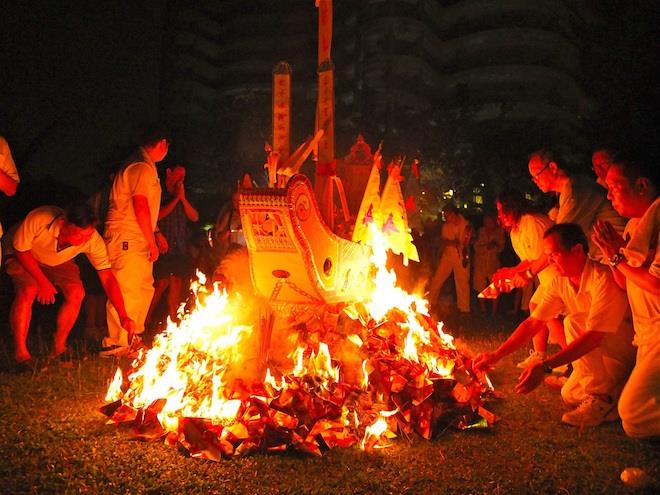In the old days, during the hungry ghost month that begins on the fifteenth night in the seventh lunar month of the Chinese calendar, Buddhists tend to stay indoors at night to avoid an eventful encounter with restless spirits let out from the netherworld and allowed to wander the earth for the month. These spirits, believed to be ancestors and perceived as ‘hungry’ were then appeased through offerings of prayers, food and entertainment by the living throughout the duration of what was, and still is, called the Hungry Ghost Festival by those of Buddhist faith.



Where To See
Basically, all Buddhist temples will hold some sort of ritual during this month
and quite often the burning of paper effigies or oblations happen on most
nights of the festival. However, there are a few spots that may offer more
dramatic scenes for photo-op, such as:
At Tua Pek Kong temple on Jalan Tokong Thai Pak Koong in Tanjung Tokong which
is located by the sea. The lanes are narrow here, so it is best to park outside
of the area or hop onto Rapid bus 101 and stop after Tesco supermarket.
At the Clan Jetties on Pengkalan Weld, there are not only the religious rituals
but also a good spot to catch performances by Chinese opera troupe, karaoke
singing concerts and multitudes of food stalls. What’s spectacular to see at
the end of Lee Jetty is the all lit-up temple perched by the water at the
neighbouring jetty. The area is a stone’s throw away from George Town’s ferry
and bus terminals.
At the Pek Kong temple on Jalan Pasar in Bukit Mertajam, colourful rituals
within the temple’s premises are held annually during this time. The temple
committee here are proud of burning the tallest and largest paper effigy each
year. This area is also known for its multitudes of hawker stalls and if not
for anything else, a feast can be had while soaking up plenty of actions that
take place during the Hungry Ghost Festival month. This temple is more than 120
years old and it takes around 20 minutes’ drive from Butterworth ferry and bus
terminals to get there.
Click here for
a list of show times in Penang.
Image credits: Su Aziz & Leonard Selva